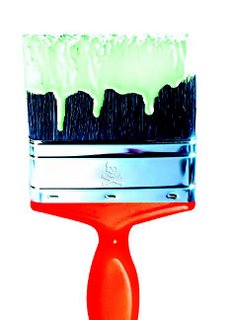
A fresh coat of paint does wonders for your home but it can also be hazardous to health — and your child’s IQ. Environmental and occupational health experts at the University of Cincinnati (UC) have found that India still produces and sells consumer paints with dangerously high levels of lead. The toxic metal, which gives paint its lustre and durability, was banned in the US in 1978 after scientific evidence proved that any detectable level of lead impairs intellectual and physical growth in children.
The UC-led research team, which published its findings in the journal Environmental Research, found that all 17 samples analysed from India had lead exceeding US limit for new paint (600 ppm). Scott Clark, who headed the two-year study, says he is concerned about kids who are currently exposed to lead in their houses and neighbourhoods and for those who will live in such places in the future.
Children ingest lead dust when they put their hands in their mouth — such as while eating or sucking their thumb. Since lead compounds used in paint taste sweet, kids tend to chew or lick them. A single chip of paint the size of a thumbnail contains 1 gm of lead and a few such chips can raise lead intake to 1,000 times the acceptable limit. There is an increased formation of lead dust during repainting or renovation of houses when existing paint is scraped or sanded.
‘‘Lead-based paints have already poisoned millions of children in the US and will likely cause similar damage in India as paint use increases,’’ says Clark. The findings, he adds, provide stark evidence of the urgent need for an effective worldwide ban on lead-based paint.
France pioneered a ban as early as the 1920s but till date, India has no such curbs in place, points out Venkatesh Thuppil, director of the National Referral Centre for Lead Poisoning. ‘‘Lead paint has a 91% market share in India. Homes, playground equipment, painted desks and chairs in schools and even the yellow school bus in which your child comes home, lead paint is everywhere,’’ says Thuppil. And it’s taking a toll. The first major study on lead poisoning in the country conducted by The George Foundation revealed that 50% of children below the age of 12 living in urban areas had high lead levels while 14% had alarmingly high levels.
According to WHO estimates, 15 to 18 million children in developing countries are suffering from permanent brain damage due to lead poisoning. Thuppil admits that the extent of poisoning from lead paint sources is not known in India. However, in one follow-up of poisoned children in Mangalore, he found that for three of the ten kids studied, lead-based paint was the only source identified. In one case, the culprit was playground equipment painted with lead paint.
Despite this, paint sold in India has no distinguishing mark to show lead content. A spokesman for leading manufacturer ICI paints, R Guha, said the company had replaced lead white with the more expensive titanium white some five to six years ago. However, its paint containers don’t advertise the fact because it’s not mandatory by law, Guha said. Smaller manufacturers make no bones about the fact that they use lead in decorative as well as industrial and automotive paints since it reduces cost by about Rs 2 to Rs 3 a litre.
‘‘There is no law against lead-based paints,’’ points out Nitin Khanna of the Indian Small Scale Paints Association. And that’s exactly what is needed, says Abhay Kumar of Toxic Links, the NGO which recently exposed the high level of lead in PVC toys. “Till there are regulations that can be enforced, lead will continue to poison our lives.”

No comments:
Post a Comment